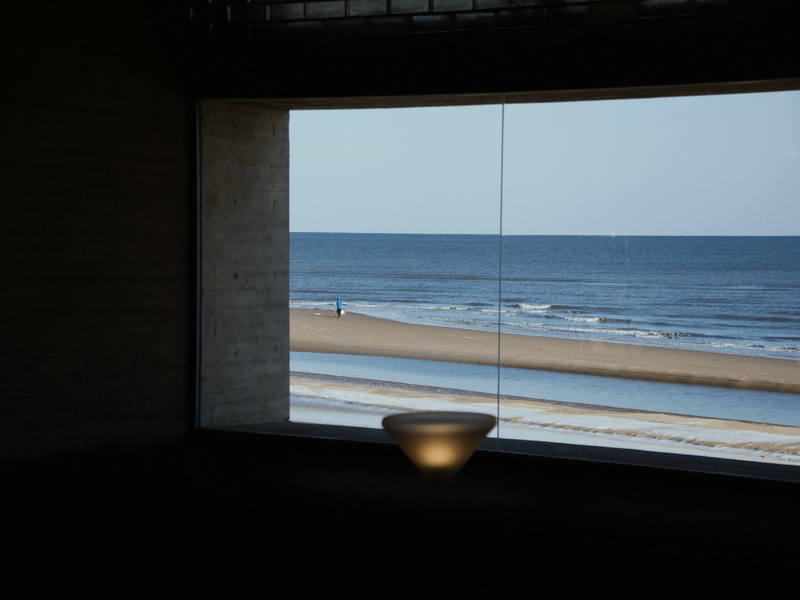English 




Views: 222 Author: Astin Publish Time: 2025-02-02 Origin: Site



Content Menu
● Understanding the Benefits of Aluminum Foil on Windows
>> Reflectivity vs. Emissivity
● Step-by-Step Guide: How To Install Aluminum Foil on Windows
>> Step 1: Gather Your Materials
>> Step 2: Measure Your Windows
>> Step 3: Cut the Aluminum Foil
>> Step 4: Prepare Your Windows
>> Step 5: Apply the Aluminum Foil
● Tips for Effective Use of Aluminum Foil on Windows
● Potential Drawbacks of Using Aluminum Foil on Windows
● Alternative Solutions for Keeping Heat Out
● FAQ
>> 1. Can aluminum foil really keep heat out?
>> 2. Is it safe to use aluminum foil on double-pane windows?
>> 3. How long does aluminum foil last when used on windows?
>> 4. Does covering windows with aluminum foil block natural light?
>> 5. Are there any risks associated with using aluminum foil on windows?
In the face of rising temperatures and soaring energy costs, homeowners are constantly seeking innovative ways to keep their living spaces cool and comfortable. One surprisingly effective and budget-friendly solution that has gained popularity is installing aluminum foil on windows. This simple yet ingenious technique can significantly reduce heat gain, lower cooling costs, and create a more comfortable indoor environment. In this comprehensive guide, we'll explore the benefits of using aluminum foil on windows, provide a step-by-step installation process, and address common concerns and alternatives.

Before delving into the installation process, it's crucial to understand why aluminum foil can be an effective tool for temperature control in your home. The primary benefit of using aluminum foil on windows is its ability to reflect sunlight and heat away from your living space. This reflective property can lead to several advantages:
1. Temperature Reduction: By reflecting sunlight, aluminum foil can significantly reduce the amount of heat entering your home through windows, potentially lowering indoor temperatures by several degrees[3].
2. Energy Savings: With less heat entering your home, your air conditioning system won't have to work as hard, potentially leading to lower energy bills[3].
3. Glare Reduction: Aluminum foil can also help reduce glare from direct sunlight, creating a more comfortable environment for activities like watching TV or working on a computer.
4. UV Protection: The foil can block harmful UV rays, which can fade furniture, carpets, and other interior furnishings over time.
5. Cost-Effective Solution: Compared to other window treatments or cooling solutions, aluminum foil is an incredibly affordable option, with a roll of heavy-duty foil costing only a few dollars[5].
The effectiveness of aluminum foil as a heat barrier lies in its physical properties, particularly its high reflectivity and low emissivity[4].
- Reflectivity: Aluminum foil reflects about 95% of infrared radiation, making it highly effective at reducing heat gain. When sunlight hits the foil, most of the heat is bounced back instead of being absorbed into your home[4].
- Emissivity: The emissivity of aluminum foil is low, meaning it does not absorb much heat itself. Instead, it reflects heat away, preventing it from entering your living space[4].
Now that we understand the benefits, let's walk through the process of installing aluminum foil on your windows. Following these steps will ensure the most effective application and maximize the cooling benefits[4].
Before you begin, make sure you have all the necessary materials on hand:
- Heavy-duty aluminum foil (recommended for durability)
- Measuring tape
- Scissors or utility knife
- Painter's tape or duct tape
- Cardboard (optional for added insulation)
- Spray bottle with water (optional)
Accurate measurements are crucial for a proper fit:
1. Use a measuring tape to determine the height and width of each window you plan to cover.
2. Add an extra inch to each measurement to ensure complete coverage and allow for taping.
With your measurements in hand, it's time to prepare the foil:
1. Cut the aluminum foil according to your measurements using scissors or a utility knife.
2. Handle the foil with care to avoid tearing, as tears can reduce its effectiveness.
Proper preparation ensures better adhesion and effectiveness:
1. Clean the window surface thoroughly, removing any dust or debris that could interfere with adhesion.
2. If you're using cardboard for added insulation, cut pieces to fit inside the window frame and cover them with aluminum foil before installation.
Now comes the crucial step of applying the foil to your windows:
1. If using cardboard, place it against the window first with the shiny side facing outwards.
2. For direct application to glass, lightly mist the window surface with water to help the foil stick.
3. Press the shiny side of the aluminum foil against the window glass or cardboard backing.
4. Use painter's tape or duct tape around the edges of the foil to hold it securely in place.
5. As you apply the foil, smooth out any air bubbles or wrinkles for a flat surface.
6. Trim any excess foil around the edges for a neat appearance.
7. Double-check that all edges are securely taped down and that there are no gaps where heat could enter[4].
To maximize the benefits of your aluminum foil installation, consider these additional tips:
1. External Application: For maximum effectiveness, apply aluminum foil on the outside of windows rather than inside. This prevents heat from being absorbed by the glass panes[3].
2. Use Heavy-Duty Foil: Opt for heavy-duty aluminum foil instead of regular kitchen-grade foil for better durability and insulation properties[4].
3. Consider Cardboard Backing: Adding cardboard behind the foil can provide additional insulation and help protect your windows from potential damage due to trapped heat[3].
4. Monitor Temperature: Keep an eye on indoor temperatures after application and adjust as necessary based on performance.
5. Regular Maintenance: Check periodically for any tears or damage in the foil and replace as needed to maintain effectiveness[4].

While aluminum foil can be an effective cooling solution, it's important to be aware of potential drawbacks:
1. Aesthetic Concerns: Covering windows with aluminum foil may not be the most visually appealing solution and could affect your home's curb appeal[3].
2. Reduced Natural Light: Foil-covered windows will significantly reduce the amount of natural light entering your home, which may not be desirable for some[7].
3. Condensation Risk: In some climates, the temperature difference between the foil and the window glass could lead to condensation, potentially causing damage to window frames or sills[7].
4. Legal Considerations: Some homeowners' associations or local ordinances may have restrictions on modifying the external appearance of homes, including windows[7].
5. Window Damage: If not applied correctly, there's a risk of damaging window seals or trapping heat between the foil and glass, potentially leading to cracks[3].
While aluminum foil can be effective, there are other solutions you might consider for keeping your home cool:
1. Reflective Window Film: This professionally installed option offers similar benefits to foil but with a more polished appearance[14].
2. Blackout Curtains or Shades: These can effectively block sunlight and provide insulation without altering the exterior appearance of your windows[14].
3. Exterior Awnings or Shutters: These additions can block sunlight before it reaches your windows, reducing heat gain[14].
4. Energy-Efficient Windows: Investing in double-pane or low-E windows can provide long-term heat reduction benefits[14].
5. Strategic Landscaping: Planting shade trees or installing trellises with climbing plants can naturally shield your windows from direct sunlight[14].
Installing aluminum foil on windows can be an effective, low-cost solution for reducing heat gain and improving energy efficiency in your home. By following the step-by-step guide and considering the tips provided, you can maximize the benefits of this simple yet powerful technique. However, it's important to weigh the potential drawbacks and consider alternative solutions that may better suit your specific needs and circumstances.
Remember that while aluminum foil can provide immediate relief from heat, it's just one of many strategies for creating a cooler, more comfortable living space. Combining this method with other energy-saving practices and home improvements can lead to even greater comfort and efficiency in the long run.

Here are some frequently asked questions about using aluminum foil on windows:
Yes, aluminum foil can effectively keep heat out of your home. Its high reflectivity allows it to bounce back a significant portion of the sun's rays and heat, preventing them from entering your living space. This can lead to noticeable temperature reductions, especially in rooms that receive direct sunlight[3].
While it's generally safe to use aluminum foil on double-pane windows, extra caution is needed. The space between the panes can trap heat, potentially leading to thermal stress and damage. If you choose to use foil on double-pane windows, it's best to apply it to the exterior surface and monitor for any signs of damage or condensation[7].
The lifespan of aluminum foil on windows can vary depending on factors such as weather conditions and the quality of the foil used. Generally, heavy-duty foil can last several months to a year before needing replacement. Regular inspections for tears, peeling, or degradation can help determine when it's time to replace the foil[4].
Yes, covering windows with aluminum foil will significantly reduce the amount of natural light entering your home. This is one of the trade-offs for its heat-blocking properties. If maintaining natural light is important, you might consider alternatives like reflective window films or use foil only on windows that receive direct sunlight during the hottest parts of the day[7].
While aluminum foil is generally safe to use on windows, there are some potential risks to consider. These include the possibility of damaging window seals or glass due to heat trapped between the foil and window, condensation issues in humid climates, and potential violations of local ordinances or homeowners' association rules regarding exterior home modifications. It's important to weigh these risks against the benefits and consider alternative solutions if these concerns are significant[3][7].
[1] https://www.youtube.com/watch?v=UDcvB5selMQ
[2] https://neothermalinsulation.com/blog/aluminum-foil-insulation/
[3] https://www.housedigest.com/1360647/aluminum-foil-lining-windows-mistake/
[4] https://www.weiye-aluminium.com/how-to-put-aluminum-foil-on-windows.html
[5] https://www.idealhome.co.uk/house-manual/home-energy/kitchen-foil-on-windows
[6] https://insulationgo.co.uk/blog/how-to-install-a1-foil-faced-insulation-the-right-way/
[7] https://discover.hubpages.com/living/Reasons-Not-to-Tape-Aluminum-Foil-on-Your-Windows
[8] https://www.youtube.com/watch?v=2LWf8lnRcZw
[9] https://www.youtube.com/channel/UCnI90RlIs3yUCDCSVLLGeUA
[10] https://www.tiktok.com/discover/how-to-apply-aluminum-foil-on-windows
[11] https://www.weiye-aluminium.com/how-to-apply-aluminum-foil-to-windows.html
[12] https://www.weiye-aluminium.com/news/Benefits-Of-Covering-Windows-With-Aluminum-Foil.html
[13] https://www.tiktok.com/discover/how-to-put-foil-on-window
[14] https://www.windownation.com/knowledge-center/blog/window-insulation-diy-how-to-insulate-windows
[15] https://www.tiktok.com/discover/what-is-the-purpose-of-putting-aluminum-foil-on-your-windows
[16] https://www.tiktok.com/@sidneyraz/video/7393006934888058154
[17] https://www.bradfordinsulation.com.au/-/media/bradford/files/wall-wrap-window-penetrations-install-guide
[18] https://www.youtube.com/watch?v=BKsFHOa4Mfc
[19] https://www.youtube.com/watch?v=0tWXuCNYJe8
[20] https://www.reddit.com/r/DIY/comments/14xf1nx/would_it_be_bad_if_i_covered_my_window_with/
Top Aluminum Furnitures Manufacturers and Suppliers in Czech Republic
Top Aluminum Furnitures Manufacturers and Suppliers in Poland
Top Aluminum Furnitures Manufacturers and Suppliers in Belgium
Top Aluminum Furnitures Manufacturers and Suppliers in Finland
Top Aluminum Furnitures Manufacturers and Suppliers in Denmark
Top Aluminum Furnitures Manufacturers and Suppliers in Greece
Top Aluminum Furnitures Manufacturers and Suppliers in Portugal
Top Aluminum Furnitures Manufacturers and Suppliers in Austria
Top Aluminum Furnitures Manufacturers and Suppliers in Norway
Top Aluminum Furnitures Manufacturers and Suppliers in Sweden
